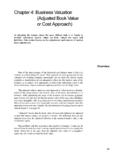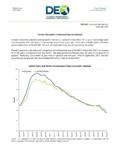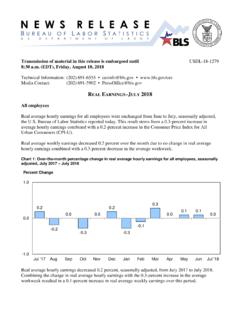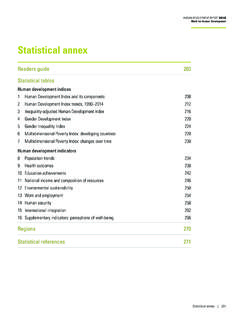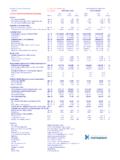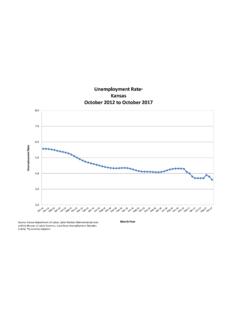Transcription of ADJUSTED APPLICABLE FEDERAL RATES AND …
1 ADJUSTED APPLICABLE FEDERAL RATES AND ADJUSTED FEDERAL LONG-TERM RATES Notice 2013-4 I. PURPOSE The Treasury Department and the internal revenue Service (IRS) are reconsidering the method used to determine the ADJUSTED APPLICABLE FEDERAL RATES ( ADJUSTED AFRs) under section 1288(b) of the internal revenue Code (Code) and the ADJUSTED FEDERAL long-term rate under section 382(f)(2). This notice requests comments from the public on what modifications should be made to the current method of determining such RATES . To limit unintended effects of the current method under certain market conditions, this notice also provides interim guidance modifying the current method, which will apply pending future guidance.
2 II. BACKGROUND A. APPLICABLE FEDERAL RATES Section 1274(d) governs the determination of APPLICABLE FEDERAL RATES (AFRs) that are used for determining the imputed principal amount of obligations to which section 1274 applies, for computing total unstated interest on payments to which section 483 applies, and for other purposes. Under section 1274(d)(1), the AFR is: (i) in the case of a debt instrument with a term not over three years, the FEDERAL short-term rate; (ii) in the case of a debt instrument with a term over three years but not over nine years, the FEDERAL mid-term rate; and (iii) in the case of a debt instrument with a term over nine years, the FEDERAL long-term rate.
3 Section 1274(d)(1)(B) requires the Secretary to determine during each calendar month the foregoing RATES that shall apply during the following calendar month. The IRS publishes the AFRs for each month in the internal revenue Bulletin, as described in section (b) of the Income Tax Regulations. Section 1288(b) provides that, in applying section 483 or section 1274 to a tax-exempt obligation (as defined in section 1275(a)(3)), under regulations prescribed by the Secretary, appropriate adjustments shall be made to the APPLICABLE FEDERAL rate to take into account the tax exemption for interest on the obligation. Although no regulations have been issued under section 1288, the IRS also publishes the ADJUSTED AFRs (determined as described below under Adjustment of RATES ) for each month in the internal revenue Bulletin.
4 B. Section 382 In the case of a corporation that has undergone an ownership change described in section 382(g): (i) section 382 places an annual limit (the section 382 limitation) on the amount of the corporation s taxable income that can be offset by certain net operating loss carryforwards and other tax attributes; and (ii) section 383 places a limit, determined by reference to the section 382 limitation, on the amount of the corporation s income tax liability that can be offset by certain tax credits and other tax attributes. Under section 382(b)(1), the section 382 limitation for a tax year ending after an 2 ownership change generally equals the product of (A) the value of the stock of the corporation immediately prior to the ownership change, and (B) the long-term tax-exempt rate.
5 Section 382(f)(1) provides that the long-term tax-exempt rate shall be the highest of the ADJUSTED FEDERAL long-term RATES in effect for any month in the three-calendar-month period ending with the calendar month in which the ownership change occurs. Section 382(f)(2) provides that the term ADJUSTED FEDERAL long-term rate means the FEDERAL long-term rate determined under section 1274(d), except that sections 1274(d)(2) and (3) shall not apply, and such rate shall be properly ADJUSTED for differences between RATES on long-term taxable and tax-exempt obligations. The Conference Report for the Tax Reform Act of 1986, Pub.
6 L. No. 99-514, 100 Stat. 2254, which added section 382(f)(2) to the Code, indicates that the ADJUSTED FEDERAL long-term rate is to be computed as the yield on a diversified pool of prime, general obligation tax-exempt bonds with remaining periods to maturity of more than nine years. 2 Rep. No. 99-841 (Conf. Rep.), 99th Cong., 2d Sess. II-188 (1986), 1986-3 (Vol. 4) 188. The report also explains that it is necessary to the purposes of section 382 that the long-term tax-exempt rate is lower than the long-term FEDERAL rate, and that the long-term tax-exempt rate would ordinarily be lower by a percentage that is less than the corporate tax rate.
7 Id. C. Adjustment of RATES Since 1986 The Treasury Department has determined the ADJUSTED AFRs described in section 1288(b)(1) and the ADJUSTED FEDERAL long-term rate described in section 3 382(f)(2) in the same manner since those RATES were first published for November 1986. See Rev. Rul. 86-133, 1986-2 59; Rev. Rul. 86-135, 1986-2 150. The ADJUSTED FEDERAL long-term rate published under section 382(f)(2) is equal to the long-term ADJUSTED AFR with annual compounding published under section 1288(b) in the same month. (The long-term tax-exempt rate prescribed by section 382(f)(1) is also published each month; it is equal to the highest of the ADJUSTED FEDERAL long-term RATES for that month and the two preceding months.)
8 Since 1986, the ADJUSTED FEDERAL long-term rate and each ADJUSTED AFR have been determined by multiplying the corresponding AFR by a fraction (the adjustment factor ). The numerator of the adjustment factor is a composite yield of the highest grade tax-exempt obligations available, which are prime, general obligation tax-exempt bonds. The denominator is a composite yield of Treasury obligations with maturities similar to those of the tax-exempt bonds. Each of the composite yields is measured over a one-month period. The adjustment factor uses prime, general obligation tax-exempt bonds in the numerator because, at the time the adjustment factor was created, such obligations were of a comparable credit quality with Treasury obligations.
9 The Treasury Department is aware, however, that there is a difference in perceived credit risk between Treasury obligations and even the highest grade tax-exempt bonds. That difference affects the relative yields of the tax-exempt bonds and the Treasury obligations represented in the adjustment factor in a way that offsets the effect of the tax exemption for the tax-exempt bonds. When the Treasury Department began using the 4 adjustment factor, the effects of the credit spread were negligible, yields of tax-exempt bonds were consistently lower than those of Treasury obligations, and the adjustment factor produced ADJUSTED AFRs and ADJUSTED FEDERAL long-term RATES that were lower than the corresponding AFRs by percentages that were significant but smaller than the highest corporate tax RATES .
10 In the last several years, however, the credit spread between Treasury obligations and most other obligations, including tax-exempt bonds, has grown appreciably. Consequently, since the beginning of 2008, market yields of prime, general obligation tax-exempt bonds have often exceeded those of comparable Treasury obligations, and the ADJUSTED AFRs and ADJUSTED FEDERAL long-term rate have often exceeded the corresponding AFRs. Those results show that the adjustment factor no longer serves the purposes of sections 1288(b)(1) and 382(f)(2), which contemplate adjustments to reflect tax exemption but not credit quality.










